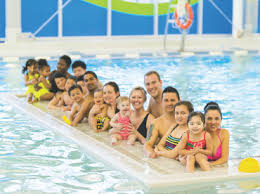You’ve probably heard stories of people teaching themselves to swim—maybe in a backyard pool, a calm lake, or by mimicking others at the beach. And yes, some manage to pick up the basics through trial and error. But here’s the hard truth: when it comes to water safety, guessing isn’t good enough.
Swimming isn’t just about moving through water—it’s about survival, confidence, and lifelong skill. That’s why a certified water safety course isn’t just helpful—it’s essential.
In this article, we’ll explore whether it’s really possible to learn to swim without a qualified instructor, why water safety matters, and how professional training shapes better swimmers and safer communities.
Learning to Swim Without a Teacher: What Are the Risks?
Let’s be honest: many Australians are self-taught swimmers. Maybe they picked it up as kids by jumping in the deep end with older siblings or trying to mimic freestyle after watching the Olympics. But learning this way often leaves big gaps in technique, endurance, and safety awareness.
Here’s what you don’t get when you try to teach yourself:
- Proper breathing techniques
- Floating and survival skills
- Safe water entry and exit methods
- Recognition of water hazards
- Emergency response knowledge
In fact, poor technique or panic in unfamiliar waters is one of the leading causes of accidental drownings. Without supervision, a small mistake can quickly become life-threatening.
According to Royal Life Saving Australia, most drowning deaths occur in inland waterways—rivers, lakes, and dams—where people often overestimate their ability.
That’s why professional instruction is more than just helpful—it’s life-saving.
Why a Water Safety Course Makes All the Difference
A water safety course doesn’t just teach you to swim—it teaches you how to be safe in and around water. Whether you’re a complete beginner, a nervous adult returning to the pool, or someone considering becoming an instructor, the course provides structured, practical learning with qualified guidance.
Here’s what sets formal training apart:
- Progressive learning: You learn in stages, from water familiarisation to stroke development.
- Qualified instructors: You get feedback and corrections from professionals who understand common fears and physical challenges.
- Real-world safety: Courses include how to handle emergencies, recognise risks, and respond effectively.
- Confidence building: Learning in a supportive environment helps reduce fear and build trust in your abilities.
These aren’t just skills for the pool—they’re skills that apply to rivers, beaches, and any other aquatic environment you’ll encounter in life.
The Confidence Factor: Learning in a Supportive Setting
Take Tim, for example—a 38-year-old electrician from Brisbane who never learned to swim as a child. “I always avoided water,” he says. “Pool parties, beach trips—I sat them out. I felt embarrassed.”
After enrolling in a water safety course, things changed. “The instructor understood where I was at. She didn’t push too hard, but she encouraged me. Now, I can swim 50 metres and float calmly. That fear’s gone.”
Tim’s story isn’t unusual. Many adults carry anxiety around swimming, often due to a lack of early exposure or a bad past experience. Trying to push through that alone can be frustrating and unsafe.
With the right guidance, though, progress comes faster—and with much less stress.
Can Kids Learn Without an Instructor?
While children may seem to pick up swimming naturally, relying on unstructured exposure isn’t enough. Supervised play is important—but it’s no substitute for professional instruction.
Kids taught by qualified swim teachers learn:
- How to control breathing and avoid panic
- The right way to float, roll, and kick
- What to do if they fall into water
- How to enter and exit safely
- The importance of supervision and water rules
These lessons stick—and they reduce the risk of drowning significantly.
Early access to a structured water safety course not only builds physical skills but also teaches children to respect water rather than fear it.
Teaching Yourself vs. Getting Trained: A Quick Comparison
| Learning Method | Pros | Cons |
|---|---|---|
| Self-Taught | Flexible, cheap, possible for basic skills | Lacks structure, risky, may miss key safety knowledge |
| Instructor-Led | Safe, structured, confidence-building | Requires time and cost investment—but pays off long-term |
For people serious about swimming well and staying safe, the instructor-led path is the clear winner.
What You’ll Learn in a Water Safety Course
Each certified water safety course includes core modules such as:
- Water familiarisation and basic mobility
- Entry/exit techniques and treading water
- Floatation, gliding, and submersion
- Stroke development: freestyle, backstroke, breaststroke
- Aquatic safety, hazard recognition, and emergency skills
- Group supervision and communication (for future instructors)
Whether you’re learning for the first time or aiming to teach others, these lessons build strong, confident swimmers from the ground up.
Final Thoughts
So—can you learn swimming without instructor? Technically, yes. But should you? Probably not.
Without structure, feedback, or safety instruction, the risks outweigh the benefits. A certified water safety course offers a far safer, more effective path—one that builds confidence, reduces fear, and ensures you’re equipped to handle real-world situations in any aquatic setting.
If you’re serious about swimming, don’t go it alone. Take the safe step. Learn the right way, from people who know how to teach it. Your life—or someone else’s—could depend on it.

